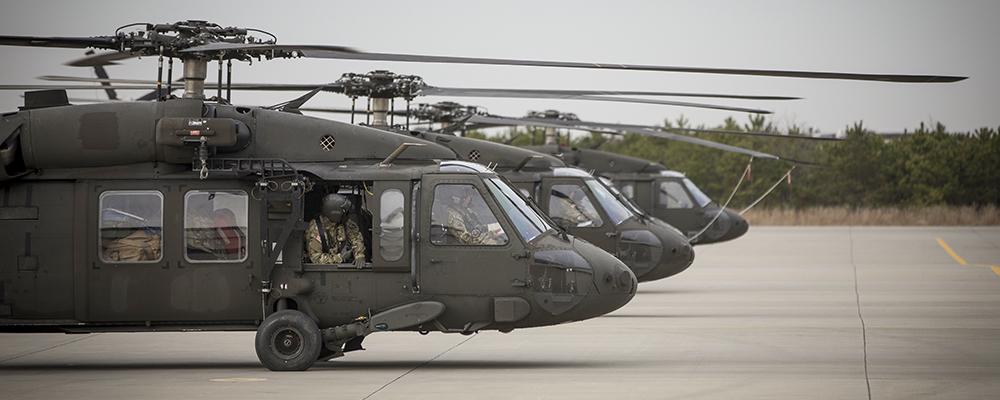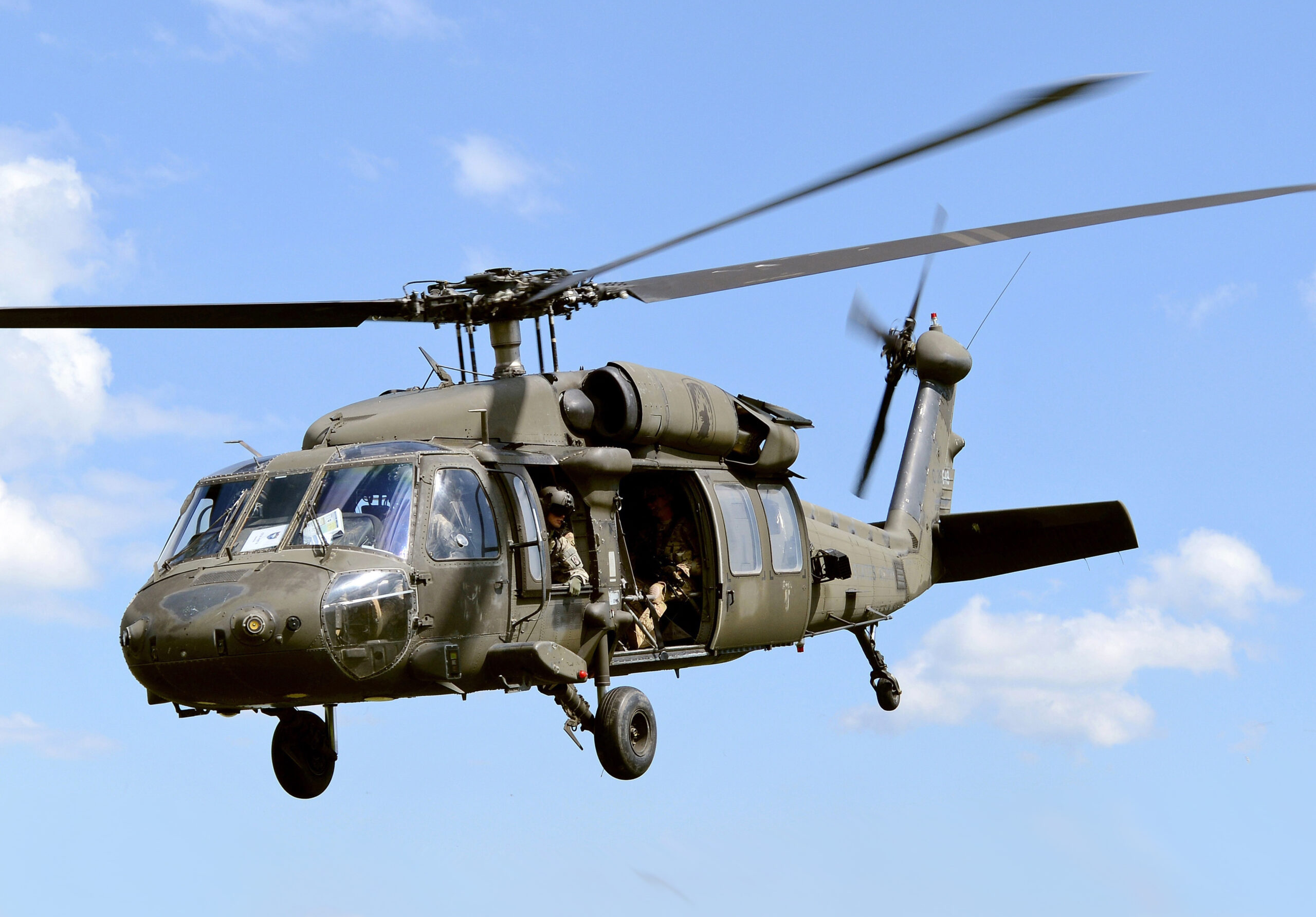The UH 60: A Versatile Airplane for Military and Civilian Use
The UH-60 helicopter, with its origins dating back to the late 1970s, has actually advanced right into an essential asset for both noncombatant and military sectors. Recognizing the full range of the UH-60's influence may disclose understandings into its possible trajectory and significance in a progressively complex operational atmosphere.
Historic Overview of the UH-60

Originally, the UH-60 was released to support army transportation, clinical emptying, and logistical operations. Its intro noted a substantial improvement in helicopter innovation, incorporating modern avionics and survivability features. The Black Hawk's capacity to operate in challenging settings, including adverse climate condition and battle zone, solidified its reputation as a reputable workhorse.
Throughout the years, the UH-60 has undertaken various upgrades and variants, adjusting to the advancing demands of military operations. Its legacy consists of involvement in key conflicts, showcasing its adaptability and effectiveness in various scenarios. The Black Hawk continues to be a keystone of military air travel, demonstrating the enduring importance of innovation in aerial transport and assistance.
Military Applications and Goals
Often deployed in diverse functional contexts, the UH-60 Black Hawk helicopter serves a wide variety of military applications that are critical to goal success - uh 60. This versatile aircraft is largely made use of for army transport, making it possible for rapid motion of soldiers to and from battle zone. Its capability enables the transport of as much as 11 fully outfitted troops, making it an important property for ground forces
The UH-60 is also indispensable to medical evacuation goals, supplying swift assistance for hurt employees under fire. Outfitted with sophisticated medical facilities, it can move casualties while ensuring continuous medical treatment. The helicopter's energy prolongs to reconnaissance and security objectives, where it collects important intelligence and enhances situational recognition for commanders.
Furthermore, the Black Hawk is regularly used for logistical support and supply objectives, delivering vital devices and provisions to troops in remote areas. Its flexibility is additional demonstrated through its capacity to operate in different environments, from urban setups to tough terrains. In general, the UH-60 Black Hawk remains a keystone of contemporary military procedures, symbolizing adaptability, reliability, and performance in meeting objective objectives.
Private Citizen Utilizes and Adaptations
Beyond army applications, the UH-60 Black Hawk helicopter has found an array of private uses and adjustments that showcase its convenience. Initially developed for army transportation and logistical support, this airplane has actually been effectively adapted for numerous private roles, consisting of emergency situation medical services (EMS), firefighting, and search and rescue operations.
In emergency situation medical solutions, the UH-60 can promptly transport clients to healthcare facilities, furnished with sophisticated medical devices and personnel. Its rate and maneuverability enable fast action in important situations, which is vital in saving lives. Furthermore, the helicopter's huge cabin permits clinical teams to run successfully during trips.
In firefighting, the UH-60 has been changed to bring water or fire retardant, making it an efficient device in combating wildfires. Its ability to hover and steer in tough surfaces provides considerable benefits over conventional ground-based firefighting approaches.

Technological Developments
How has the evolution of modern technology affected the abilities of the UH-60 Black Hawk helicopter? The UH-60 has undertaken considerable developments since its beginning, substantially improving its operational effectiveness. One essential development is the combination of advanced avionics, which consists of digital trip control systems and multifunction screens, improving situational recognition for pilots. This enables better navigation and goal planning, specifically in challenging environments.

Furthermore, the incorporation of composite products in the airframe has actually decreased weight while preserving site architectural honesty, adding to boosted haul ability and fuel effectiveness. The helicopter's blades system has actually additionally benefited from technological advancements, such as sound decrease technologies and enhanced aerodynamic style, which boost both efficiency and stealth capacities.
In Addition, the UH-60's adaptability to various mission profiles is enhanced by modular systems, allowing fast reconfiguration for functions varying from medevac to army transportation. uh 60. The intro of sophisticated interaction systems makes certain real-time information sharing and control throughout goals, which is vital in modern combat scenarios. Collectively, these technological developments have transformed the UH-60 right into a formidable and flexible possession in both armed forces and private applications
Future Potential Customers and Advancements

In addition, ongoing study into alternate energy sources, such as hybrid-electric propulsion, provides a possibility for enhanced gas efficiency and minimized environmental impact. This lines up with both civilian and armed forces objectives for sustainability. The UH-60's adaptability to numerous roles, from clinical evacuation to look and rescue, guarantees its continued significance in varied functional contexts.
Furthermore, collaborations with protection professionals are cultivating innovations in weaponry and sensing unit modern technology, enabling the Black Hawk to successfully respond to modern-day hazards. As the army landscape evolves, the UH-60's style will likely welcome modularity, permitting rapid reconfiguration based on objective demands. In general, the future of the UH-60 is brilliant, characterized by improved performance, convenience, and an undeviating commitment to satisfy the difficulties of modern war and altruistic initiatives.
Conclusion
The UH-60 helicopter exemplifies versatility through its double role in armed forces and private operations. Its robust design and advanced technological functions promote a vast array of goals, from army transportation to emergency situation medical services. As ongoing developments remain to enhance its capabilities, the UH-60 stays an essential property across different operational environments. The enduring importance of this redirected here airplane appears, guaranteeing its significance in future military and noncombatant applications.
The UH-60 Black Hawk helicopter, a pivotal possession in modern military aeronautics, was first presented in the late 1970s as part of the U.S. Army's mission for a trusted and click this link versatile utility helicopter.Often deployed in varied functional contexts, the UH-60 Black Hawk helicopter offers a plethora of army applications that are vital to objective success. Generally, the UH-60 Black Hawk continues to be a keystone of modern military operations, embodying adaptability, dependability, and performance in satisfying mission objectives.
As the military landscape develops, the UH-60's design will likely embrace modularity, allowing for rapid reconfiguration based on mission requirements.The UH-60 helicopter exemplifies versatility via its dual duty in noncombatant and armed forces operations.
Comments on “UH 60 Helicopter Specifications: What Sets It Apart from Other Military Aircraft”